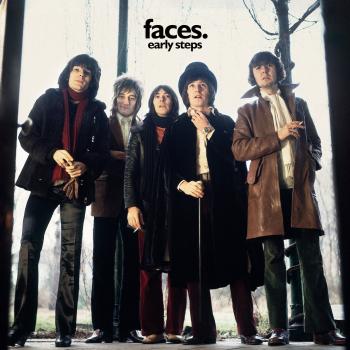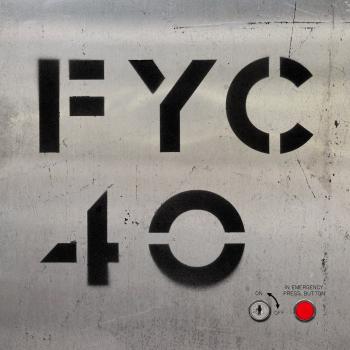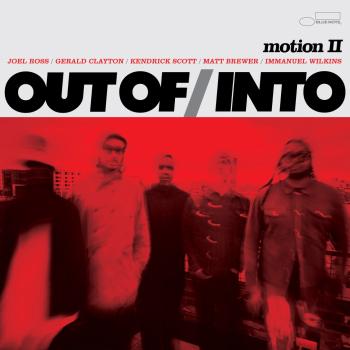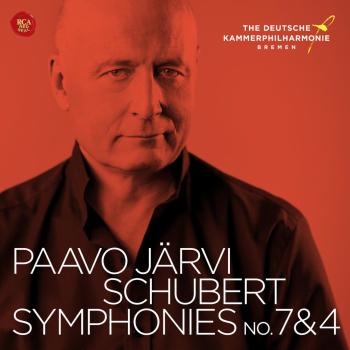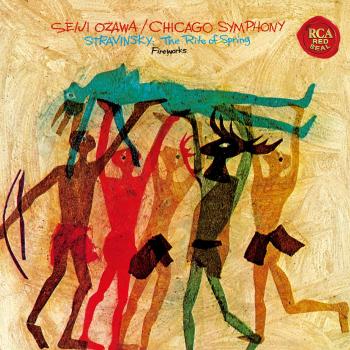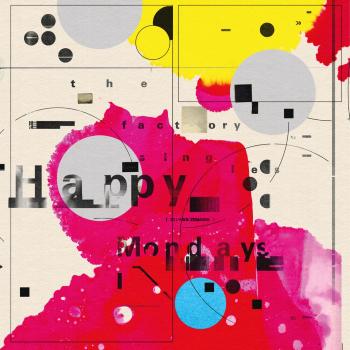
Mussorgsky: Pictures at an Exhibition Songs and Dances of Death The Nursery New Zealand Symhony Orchestra & Peter Breiner
Album info
Album-Release:
2012
HRA-Release:
28.09.2012
Label: Naxos
Genre: Classical
Subgenre: Orchestral
Artist: New Zealand Symhony Orchestra & Peter Breiner
Composer: Modest Petrovich Mussorgsky
Album including Album cover Booklet (PDF)
- 1 Promenade 02:04
- 2 I. Gnomus 03:24
- 3 Promenade 01:17
- 4 II. Old Castle 04:36
- 5 Promenade 00:37
- 6 III. Tuileries 01:03
- 7 IV. Bydlo 03:33
- 8 Promenade 01:01
- 9 V. Ballet of the Chickens in their Shells 01:17
- 10 VI. Samuel Goldenberg and Schmuyle 02:43
- 11 Promenade 01:46
- 12 VII. The Market-Place at Limoges 01:36
- 13 VIII. Catacombae (Sepulcrum romanum) 02:22
- 14 VIII. Cum mortuis in lingua morta 02:15
- 15 IX. The Hut on Fowl's Legs (Baba-Yaga) 03:39
- 16 X. The Great Gate at Kiev 07:14
- 17 No. 1. Lullaby 03:39
- 18 No. 2. Serenade 04:27
- 19 No. 3. Trepak 05:05
- 20 No. 4. The Field-Marshal 05:27
- The Nursery (Detskaya) (orch. Peter Breiner)
- 21 No. 1. S nyaney (With Nurse) 03:34
- 22 No. 2. V uglu (In the Corner) 01:48
- 23 No. 3. Zhuk (The Beetle) 03:43
- 24 No. 4. S kukloy (With the Doll) 01:41
- 25 No. 5. Na son gryadushchiy (Going to Sleep) 02:08
- 26 No. 6. Kot Matros (The Cat Sailor) 02:23
- 27 No. 7. Poyekhal na palochke (On the Hobbyhorse) 03:46
Info for Mussorgsky: Pictures at an Exhibition Songs and Dances of Death The Nursery
Modest Petrovich Mussorgsky was born in 1839, the fourth son of a land-owner. As a young officer he had musical ambitions and, without any training in composition, tried his hand at an opera and less demanding compositions for the entertainment of his friends. It was a meeting with the nationalist composer César Cui, an expert in military fortification, and with the composer Dargomïzhsky, that led him to a more influential connection with Balakirev, self-appointed leader of the nationalists, and their polymath mentor, the immensely influential Vladimir Stasov, Mussorgsky’s first biographer. It is of some interest to notice that Stasov at first found little good to say of Mussorgsky, whom he found lacking in ideas and a complete idiot, a judgement in which Balakirev concurred at the time and over the following years. Mussorgsky resigned his commission in the army in 1858. Following the emancipation of the serfs of 1861, which brought financial consequences for land-owners, Mussorgsky in 1863 took a position as a clerk in the Ministry of Communications, and continued intermittently in government employment. It was from this time onwards that he developed his own highly original musical ideas and language, and his deep interest in the people and history of Russia. In 1867 he left the civil service and attempted to earn a living from music, as a teacher and accompanist, but the following year he sought to solve his financial difficulties by taking a position in the government Forestry Department. Perhaps his greatest musical success came in 1874 with the performance of his historical opera Boris Godunov, a work to which critics, however, took general exception. His bouts of drinking finally forced him to abandon government service in 1880, after attempts by friends to protect his position. Others now offered him support, hoping that he might complete his operas Sorochintsy Fair and Khovanshchina, two tasks that, in the circumstances, were beyond him. He died in March the following year, his death the result of epilepsy, induced by alcoholism. He left much unfinished, to be revised and edited by his colleague Rimsky-Korsakov, from whom Balakirev had recently advised him to take lessons in harmony. Rimsky-Korsakov, who had acquired his musical skills largely as an adult, after earlier service as a naval officer, was to revise and finish some of the works that Mussorgsky had failed to complete, and to perform the same service for the nationalist composer Borodin, introducing an element of musical sophistication that has not always proved welcome, as the nature of Mussorgsky’s originality and genius has become more widely understood and appreciated.
Pictures at an Exhibition was written in 1874 as a set of piano pieces, a translation into music of paintings, designs, models and drawings by Mussorgsky’s friend Victor Hartmann, who had died the year before. These piano pieces have been orchestrated by various composers, with the version by Maurice Ravel probably the best known. Peter Breiner has here orchestrated the pieces for an orchestra of piccolo, three flutes, alto flute, four oboes, cor anglais, four clarinets, bass clarinet, four bassoons, contrabassoon, four horns, four trumpets, four trombones, tuba, timpani, and six percussion players, with bass drum, snare drum, cymbals, tam-tam, anvil, temple blocks, cabassa, tambourine, tubular bells, glockenspiel, xylophone, marimba, and vibraphone. The orchestra used also has piano, harp and celeste, with a string section of sixty players.
The exhibits are linked by a Promenade, as the visitor to the exhibition goes from exhibit to exhibit. The titles of the works are largely self-explanatory. Gnomus is a design for nutcrackers in the shape of a gnome; The Old Castle shows a troubadour singing outside the castle walls and the Tuileries depicts children at play and quarrelling, while nursemaids gossip, in the famous Paris gardens. Bydlo is a traditional Polish peasant ox-cart, with its creaking wooden wheels slowly turning; Ballet of the Chickens in their Shells shows designs for children’s costumes, as described in the title, and Samuel Goldenberg and Schmuyle, the names of those portrayed the invention of the painter, is a picture of two Jews, one rich, one poor, a present by Hartmann to the composer. In Limoges market-place old women gossip, discussing the fate of an escaped cow, and more trivial nonsense, while the Roman Catacombs, subtitled Sepulchrum Romanum, are lit by a flickering lamp, the skulls piled on either side beginning to glow in the light from within. This is linked to the eerie With the Dead in the Language of the Dead. The macabre continues with The Hut on Fowl’s Legs, a clock in the form of the hut of the witch Baba Yaga, who crunches up children’s bones and flies through the night on a pestle. The impressive conclusion offers a design for a triumphal gate in Kiev, to commemorate the escape of Tsar Alexander II from assassination in 1866. The music contrasts the massive structure with the sound of a solemn procession of chanting monks.
Mussorgsky wrote songs throughout his life, the first at the age of nineteen and the last in 1879. Pesni i piyaski smerti (Songs and Dances of Death) date from 1875, with the fourth song written in 1877. Based on a suggestion from Stasov and with texts by Arseny Golenischchev-Kutuzov, the songs reflect encounters with death. In the first, Kolïbel’naya (Lullaby), dedicated to the veteran singer Anna Vorobyeva-Petrova, Death lulls to final sleep a child, dying in his mother’s arms, and in the second, Serenada, dedicated to Glinka’s sister, Death serenades a dying girl, claiming her as his own. In Trepak, dedicated to the bass Osip Petrov, Death dances with a drunken peasant, lured to die in the ice and snow. The fourth song, Polkovodets (The Field Marshal), dedicated to Kutuzov, presents a scene of battle, after which Death surveys the field, having conquered all. Peter Breiner’s orchestral arrangement of the songs is scored for two flutes with piccolo, two oboes with cor anglais, two clarinets and a bass clarinet, two bassoons and a contrabassoon, four horns, three trumpets, four trombones, tuba, timpani, snare drum, cymbals, bass drum, triangle, tubular bells, glockenspiel, xylophone, harp, celesta, piano and a string section of fifty players.
For his orchestral arrangement of The Nursery Peter Breiner uses similar forces, with the addition of tambourine, marimba and vibraphone to the percussion section. Mussorgsky was good with children and the songs that make up The Nursery reflect this ability to enter a child’s world on equal terms. The words, in prose, their rhythms and intonations reflected in the vocal line, are by the composer. The first song of the cycle, S nyaney (With Nurse), was written in 1868 and is dedicated to Dargomïzhsky, described as ‘the great teacher of musical truth’. A child begs his nurse to tell him stories of bogeymen, of a limping Tsar and a sneezing Tsaritsa; in the end, though, he would rather have a funny story. V uglu (In the Corner) has Nanny rebuking her charge for splashing ink over a sock and upsetting her knitting; the child rejects these accusations, claiming to have been good, while Nanny is being horrible. The song, with the following three of the series, was written in 1870. It is dedicated to Victor Hartmann. Zhuk (The Beetle), dedicated to Vladimir Stasov, has the boy telling Nanny about a beetle that appeared while he was playing and flew into him, and now lies on its back hardly moving; he puzzles over what has happened to it. S kukloy (With the Doll), dedicated to his niece and nephew Tanyushka and Goga, children of his brother Filaret, has the child, presumably a little girl, lulling a doll to sleep, with threats of bogeymen and speculation about the fine land of dreams. Na son gryadushchiy (Going to Sleep) is dedicated to his godson, César Cui’s child Sasha. The little girl says her prayers, listing all those to be remembered, corrected finally to include herself, a sinner, to Nanny’s final approval.
The last two songs of the set were written in 1872 and originally intended to form part of another group, At the Dacha. In Kot Matros (The Cat Sailor) the little girl searches for a sunshade and finally rescues their caged bullfinch from their cat, Sailor. Poyekal na palochke (On the Hobby Horse), originally described as ‘An Episode from a Child’s Life’, is dedicated to Vladimir Stasov’s brother Dimitri and his wife Polixena. The boy rides his wooden hobbyhorse, pretending to ride out for the day, urging his horse onward, only to hurt his foot and need his mother’s consolation. (Keith Anderson)
Note on the Orchestration:
I was not trying to re-create Mussorgsky’s orchestral sound in this recording, but actually to create a contemporary sound. I wanted to create it without using any unusual instruments and to stay within the limits of the traditional symphony orchestra with a substantial expansion in woodwind and percussion. I tried to create a contemporary sound with unusual combinations and settings.
From the very beginning, the first Promenade combines alto flute, cor anglais and violins divisi in eight parts, with martellato violas. In places the piccolo doubling another solo woodwind at the octave and a fifth above creates an organ-like mixture effect, with the bassoon in Il vecchio castello. The possibility of setting the harmonies within one group of woodwind, thanks to the employment of four instruments in each group, creates also a lot of unusually sounds. Some solo passages were assigned to instruments that would not be really expected in that rôle—a trumpet solo in Tuileries, and a combination of trombones, four flutes and vibraphone in Cum nortuis in lingua morta.
There are a few things added to the score that were not in the piano version, such as horn glissandi in Gnomus and Bydlo, harp/vibraphone figurations in Gnomus, piano/celesta figurations in Il vecchio castello, flute figures in Samuel Goldberg und Schmuyle and La cabane sur des pattes de poule. At the end a body of 104 musicians creates quite a spectacular Great Gate of Kiev.
The song cycles introduce a different problem—to replace the vocal line in a way to make it an organic part of the orchestration. Thanks to rather recitativo like vocal lines this was possible by dividing it almost always between several solo instruments. Wherever Mussorgsky has a nice long melody, however, I try to remain within a single colour to support it. There is a lovely violin solo in Serenade and cor anglais in Trepak. (Peter Breiner)
The New Zealand Symphony Orchestra
Peter Breiner, conductor
Producer Wayne Laird
Engineer Paul McGlashan
Recorded at the Michael Fowler Centre, Wellington, New Zealand, 7-9 February, 2012
No biography found.
Booklet for Mussorgsky: Pictures at an Exhibition Songs and Dances of Death The Nursery



